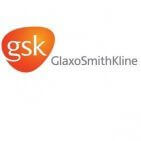Jonathan Morton, engineering director of BES, the specialist in design and construction of sophisticated healthcare, pharmaceutical and biopharma environments, discusses the pharmacy and aseptic suite project the company has designed and delivered at Weston Park Hospital in Sheffield
Weston Park Hospital, part of the Sheffield Teaching Hospitals NHS Foundation Trust, specialises in cancer treatment. The hospital is in the process of realising a two-phase refurbishment project designed, engineered and constructed by BES, to create a new Advanced Therapy Medicinal Product (ATMP) and Clinical Trials (CT) aseptic suite, along with a refurbished pharmacy Chemotherapy Aseptic Dispensing Unit.
ATMP denotes an extremely sophisticated field of emerging biopharmaceutical medicines, with preparations tailored to the specific requirements of individual patients. This includes regenerative medicine, personalised treatments and the development of nanomedicines using either a gene therapy medicinal product, a somatic cell therapy medicinal product, or a tissue engineered product. The pharmacy and aseptic suite project is designed to futureproof the hospital’s drug preparation capabilities on site.
Appointed as principal designer and principal contractor, BES has been responsible for maintaining BAU (business as usual) within the fully-operational hospital during the two-phase project. Redundant office areas on the 6th floor will be refurbished to create the Chemotherapy Aseptic dispensing facility in phase 1 and the former pharmacy will be refurbished as the new aseptic suite with CT and ATMP preparation facilities.





































